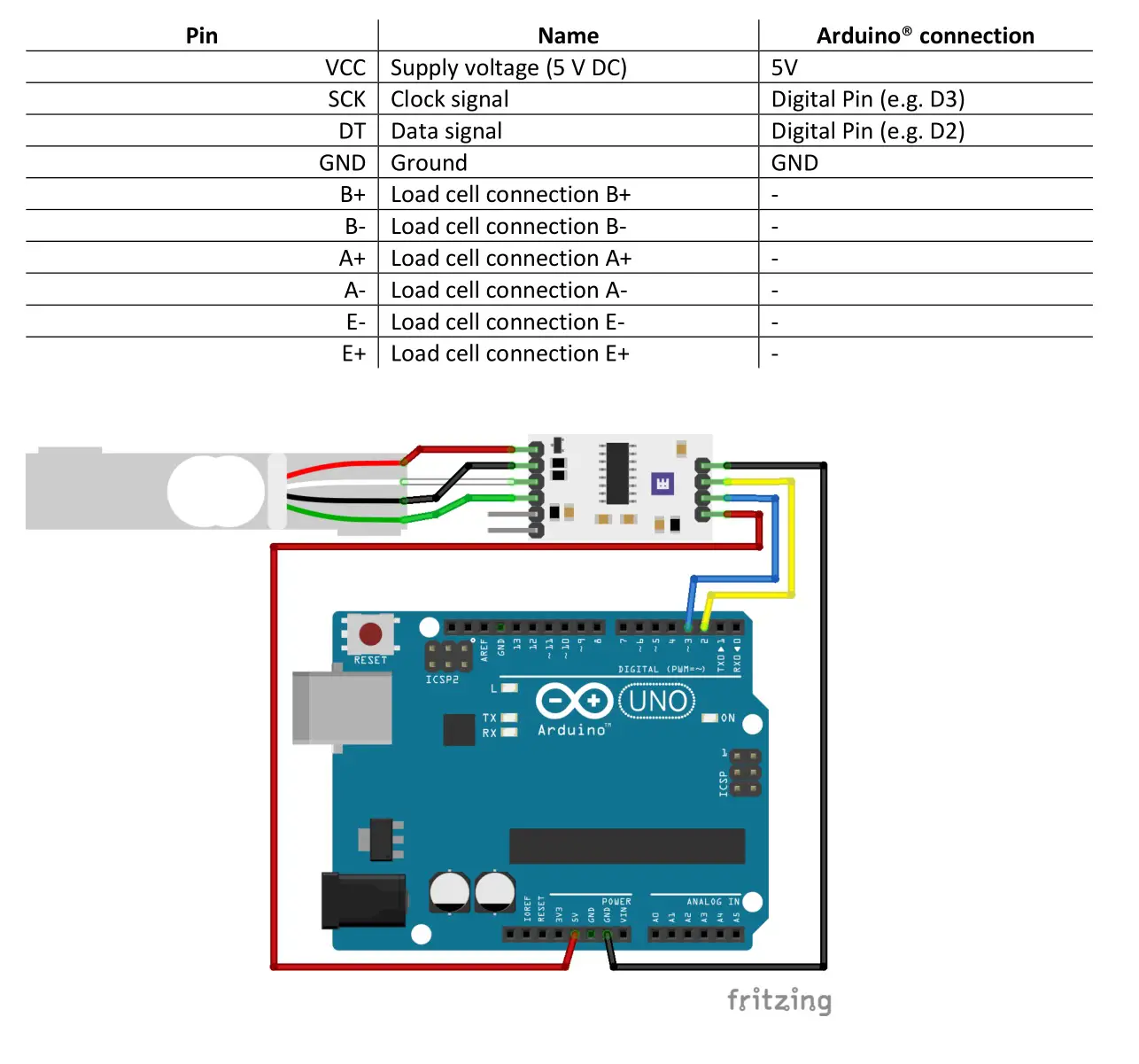WHADDA WPSE471 Electronic Scale Load Cell Sensor User Manual
Introduction
To all residents of the European UnionImportant environmental information about this product
This symbol on the device or the package indicates that disposal of the device after its lifecycle could harm the environment. Do not dispose of the unit (or batteries) as unsorted municipal waste; it should be taken to a specialized company for recycling. This device should be returned to your distributor or to a local recycling service. Respect the local environmental rules.
If in doubt, contact your local waste disposal authorities.
Thank you for choosing Whadda! Please read the manual thoroughly before bringing this device into service. If the device was damaged in transit, do not install or use it and contact your dealer.
Safety Instructions
Read and understand this manual and all safety signs before using this appliance.
For indoor use only
- This device can be used by children aged from 8 years and above, and persons with reduced physical, sensory or mental capabilities or lack of experience and knowledge if they have been given supervision or instruction concerning the use of the device in a safe way and understand the hazards involved. Children shall not play with the device. Cleaning and user maintenance shall not be made by children without supervision.
General Guidelines
- Refer to the Velleman® Service and Quality Warranty on the last pages of this manual.
- All modifications of the device are forbidden for safety reasons. Damage caused by user modifications to the device is not covered by the warranty.
- Only use the device for its intended purpose. Using the device in an unauthorised way will void the warranty.
- Damage caused by disregard of certain guidelines in this manual is not covered by the warranty and the dealer will not accept responsibility for any ensuing defects or problems.
- Nor Velleman nv nor its dealers can be held responsible for any damage (extraordinary, incidental or indirect) – of any nature (financial, physical…) arising from the possession, use or failure of this product.
- Keep this manual for future reference.
What is Arduino®
Arduino® is an open-source prototyping platform based on easy-to-use hardware and software. Arduino® boards are able to read inputs – light-on sensor, a finger on a button or a Twitter message – and turn it into an output – activating of a motor, turning on an LED, publishing something online. You can tell your board what to do by sending a set of instructions to the microcontroller on the board. To do so, you use the Arduino programming language (based on Wiring) and the Arduino® software IDE (based on Processing). Additional shields/modules/components are required for reading a twitter message or publishing online. Surf to www.arduino.cc for more information
Product overview
The Whadda electronic scale load cell sensor package combines both an accurate load cell rated up to 20 kg, and a sensitive A/D converter board that easily interfaces with a large variety of microcontrollers (such as an Arduino® compatible board).In order to get accurate readings, the fixed side of the load cell should be mounted to a fixed, secure part. It is recommended to also mount a sturdy measuring surface where the weights can be placed upon to the measuring side of the load cell.
Specifications
Load cell model: YZC-131Rated load: 20 kgNonlinearity: ± 0.05% (Full-Scale)Hysteresis: 0.0% (Full-Scale)Repeatability: 0.05% (Full-Scale)Creep (5 min): 0.05% (Full-Scale)Temperature stability: 0.003% / °C (Full-Scale)A/D converter IC: HX711Supply voltage: 5 V DCWeight: 35 gDimensions load cell (W x L x H): 13 x 75 x 12 mmDimensions sensor board (W x L x H): 40 x 20 x 7 mm
Note: all dimensions are in mm

Example program
You can download the example Arduino® program by going to the official Whadda github page: github.com/WhaddaMakers/Electronic-scale-load-cell-sensor
1. Click the “Download ZIP” link in the “Code” menu:

2. Unzip the downloaded file, and browse to the calibrate_sensor folder. Open the calibrate_sensor Arduino® sketch (calibrate_sensor.ino) located in the folder.
3. Use the Arduino Library manager to install the HX711 Arduino Library, by going to Sketch > Include Library > Manage Libraries… , typing in HX711 Arduino Library in the search bar and clicking “Install”:

4. Connect your Arduino compatible board, make sure the correct Board and connection port are set in the tools menu, and hit
Upload ![]()
5. Open the serial monitor by clicking the serial monitor button ![]()
![]()
![]()
7. Once the correct weight is showing, type in the d character (1) and press send (2) to indicate that the calibration process has finished. Select and copy the resulting #define statements containing the calibration parameters (3).
![]()
![]()
8. Open the read_weight.ino sketch, and paste the copied #define statements in lines 32 and 33:
![]()
![]()
9. Upload ![]()
![]()
![]()
![]()
![]()
![]()




Modifications and typographical errors reserved – © Velleman Group nv. WPSE471Velleman Group NV, Legen Heirweg 33 – 9890 Gavere.
References
GitHub – WhaddaMakers/Electronic-scale-load-cell-sensor: Example code for the Whadda electronic scale load cell sensor (WPSE471).
Arduino – Home
Arduino – Home
Whadda – Exciting Electronics
GitHub – WhaddaMakers/Electronic-scale-load-cell-sensor: Example code for the Whadda electronic scale load cell sensor (WPSE471).
GitHub – WhaddaMakers/Electronic-scale-load-cell-sensor: Example code for the Whadda electronic scale load cell sensor (WPSE471).
Arduino – Home
GitHub – WhaddaMakers/Electronic-scale-load-cell-sensor: Example code for the Whadda electronic scale load cell sensor (WPSE471).
Whadda – Exciting Electronics
Arduino – Home
[xyz-ips snippet=”download-snippet”]

